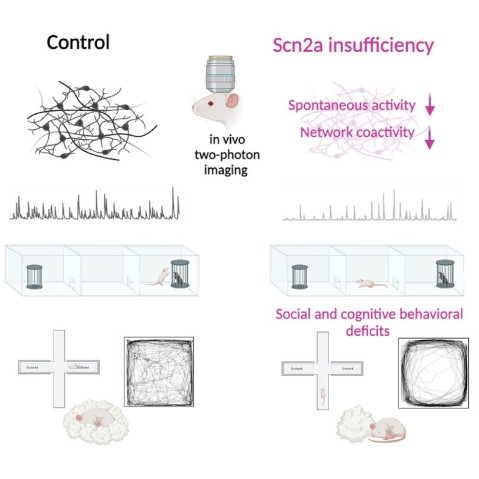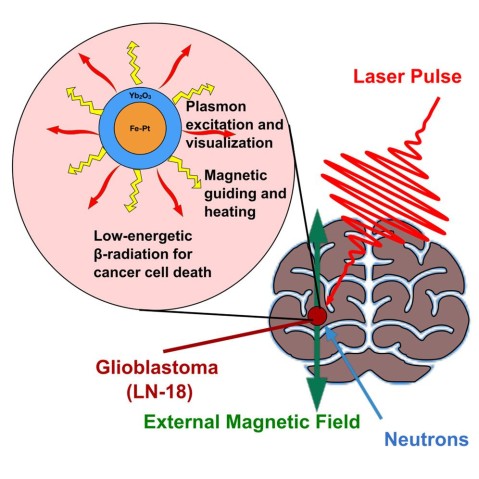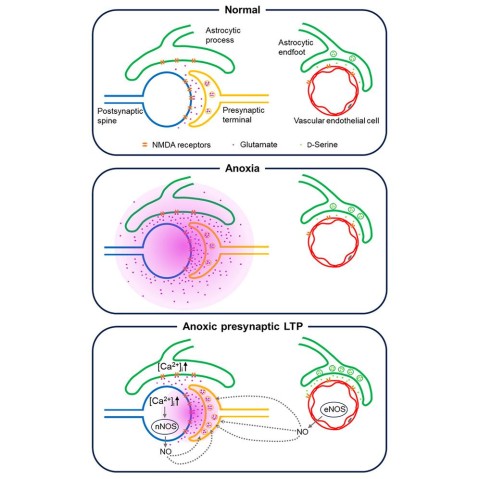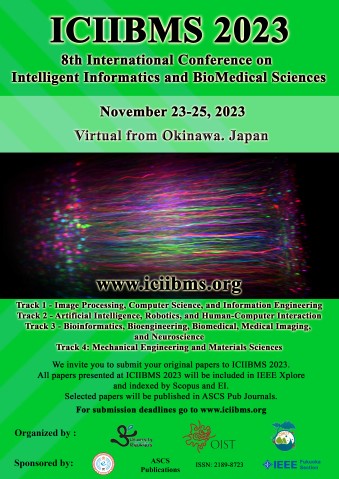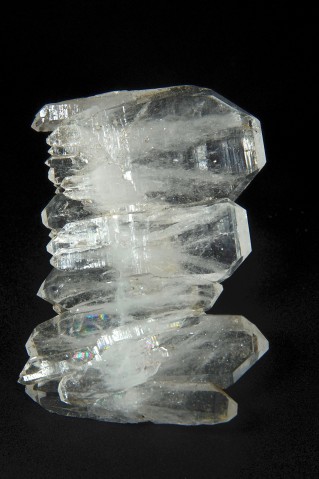Abstract
In FY 2023 the Optical Neuroimaging Unit continued the projects of the previous years. Research projects focused on imaging neuronal and astrocytic activity in the brain of awake mice.
1. Staff
- Dr. Bernd Kuhn, Professor
- Dr. Christopher J. Roome, Staff Scientist
- Dr. Melody Li, Postdoc
- Dr. Sigita Augustinaite, Technician
- Dr. Shinobu Nomura, Technician
- Dr. Mykola "Nik" Medvidov, Technician
- Dr. Kazuo Mori, Technician
- Dr. Heidi Teppola-Gürel, Postdoc
- Tomas V., Technician
- Soumen Jana, Ph.D. Student
- Lina Koronfel, Ph.D. Student
- Mohamed Mostafa Eltabbal, PhD Student
- Cedric Galetzka, PhD Student
- Miles Desforges, PhD Student (co-supervised by Kenji Doya)
- Thato Mokhothu, PhD Student (co-supervised by Kazumasa Tanaka)
- Gaston Sivori, PhD Student (so-supervised by Tomoki Fukai)
- Aleksandra Gavrilova, PhD Student
- Taisuke Higuchi, PhD Student (co-supervised by Yukiko Goda)
- Saffira Yon Tjon, PhD Student
- Amela Londo, Intern Student
- Rintaro Shimojo, Intern Student
- Andreea Carmen Dumitrescu, Intern Student
- Iryna Teplova, Intern Student
- Manami Gima, Research Unit Administrator
Stem Cell and Organoid Research Group
- Dr. Hoang-Dai Tran, Postdoctoral Scholar
- Charlotte Denman, Ph.D. Student
- Runrun Han, Research Technician
2. Collaborations
2.1 High-resolution imaging of barrel cortex through VSD and LFP recordings
- Description: Combining high-resolution electical recording with electrode arrays and voltage imaging
- Type of collaboration: Joint research
- Researchers:
- Associate Professor Stefano Vassanelli, Padua University, Italy
- Dr. Claudia Cecchetto, Junior Researcher, NEU-PAGES Project Team Leader, Padua University, Italy
2.2 Motion correction of in vivo 2P imaging data
- Description: Development of algorithms for motion correction of 2P imaging data
- Type of collaboration: Joint research
- Researcher:
- Philipp Flotho, MSc., Systems Neuroscience & Neurotechnology Unit, Saarland University, Germany
2.3 Development of a genetic targeting mechanism for the pure electrochromic voltage-sensitive dye ANNINE-6
- Description: Synthesis of new voltage-sensitive dyes and in vivo testing of labeling
- Type of collaboration: Joint research
- Researcher:
- Dr. Eugene Khaskin, Science and Technology Group, OIST
2.4 Development of 2D and 3D human pluripotent stem cell differentiation platform for human disease modeling
- Description: Development of 2D and 3D human pluripotent stem cell differentiation platform for human disease modeling
- Researchers:
- Professor Dong Ryul Lee, CHA University, Korea.
- Dr. Min-Kyoung Shin, CHA University, Korea.
- Assistant Professor Junghyun Jo, Ajou University
2.5 Neutron-activated, plasmonically excitable Fe-Pt-Yb2O3 core-shell nanoparticles delivering anti-cancer radiation against human glioblastoma brain cancer cells
- Description: Development of novel core-shell nanoparticles which can be neutron-activated, plasmonically excited
- Researcher:
- Dr. Klaus Seemann, Peter Grünberg Institute, Forschungszentrum Jülich, Germany; Université de Lorraine, CNRS, Nancy, France
2.6 Anoxia-Induced LTP at Hippocampal CA1 Synapses
- Description: Imaging astrocytes in vitro during and after anoxia
- Researchers:
- Professor Tomoyuki Takahashi, OIST
- Dr. Han-Ying Wang, OIST
- Isabel Anaí Echeverría Oviedo, PhD Student, NERF in Leuven, Belgium
2.7 Effect of the human FoxP2 gene on a licking task in mouse
- Description: Calcium imaging during a licking task in transgenc mice
- Researchers:
- Adjunct Professor Svante Pääbo, OIST
- Dr. Xiang-Chun Ju, OIST
2.8 Customized AAVs for in vivo imaging
- Description: Customized AAVs for different in vivo imaging applications
- Researchers:
- Dr. Kiyoto Kurima, OIST
2.9 Involvement of astrocytes in memory formation
- Description: We want to answer the question how astrocytes contribute to memory formation.
- Researchers:
- Assistant Professor Kazumasa Z Tanaka, OIST
- Team Leader Jun Nagai, RIKEN CBS
2.10 Optimizing the synthesis of the pure electrochromic voltage-sensitive dye ANNINE-6
- Description: Using novel pathways to synthesize ANNINE-6pls
- Type of collaboration: Joint research
- Researcher:
- Professor Christine Luscombe, OIST
- Nivedha Velmurugan, PhD student
2.11 Projections from tutor-song-responsive neurons in NCM to the song premotor area, HVC, disappear at the end of the song learning critical period
- Description: In vivo two-photon imaging in zebra finches
- Type of collaboration: Joint research
- Researcher:
- Professor Yoko Yazaki-Sugiyama, OIST
- Dr. Joanna Komorowska-Mueller, PostDoc, OIST
3. Activities and Findings
3.1 Voltage Imaging
We improve voltage imaging by synthesizing new dyes and applying them in cerebellar and cerebral cortex. In cerebellar Purkinje neurons, we study dendritic voltage changes during sensory stimulation, the effect of interneurons on dendritic voltage changes, and voltage changes during eye blink conditioning.
3.2 Ca2+ imaging in cortical layer 6
We study neuronal Ca2+ activity in layer 6 of visual cortex during different behavioral states.
3.3 Behavioral state-dependent protein kinase A activity modulated by noradrenaline and dopamine in layer II/III of somatosensory cortex
The catecholaminergic system influences animal behavior by modulating neuronal activity through G-protein coupled receptors and downstream signaling, involving protein kinase A (PKA). Currently, little is known about the real-time dynamics of cortical PKA activity in awake animals. Here, we imaged PKA activity in dendrites and somata of somatosensory cortex layer II/III with two-photon microscopy and the sensor GAkdYmut. Tonic PKA activity was maintained during wakefulness through noradrenaline (NA) and dopamine (DA). Voluntary locomotion induced, on average, biphasic PKA activity changes; decrease during locomotion followed by an overshooting rebound after locomotion offset. Individual somata and dendrites showed a continuum of responses induced by NA and DA. The PKA activity transients of individual dendrites and somata typically changed with every locomotion event, while forced locomotion, associated with stress, induced more cell-specific PKA activity. Positive and negative PKA responses showed a hysteresis, fine-tuning subsequent tonic PKA activity, and thereby excitability and synaptic transmission.
3.5 Social Relationship as a Factor for the Development of Stress Incubation in Adult Mice
While stress reactions can emerge long after the triggering event, it remains elusive how they emerge after a protracted, seemingly stress-free period during which stress incubates. Here, we study the behavioral development in mice isolated after observing an aggressive encounter inflicted upon their pair-housed partners. We developed a spatially resolved fine-scale behavioral analysis and applied it to standard behavioral tests. It reveals that the seemingly sudden behavioral changes developed gradually. These behavioral changes were not observed if the aggressive encounter happened to a stranger mouse, suggesting that social bonding is a prerequisite for stress incubation in this paradigm. This finding was corroborated by hemisphere-specific morphological changes in cortex regions centering at the anterior cingulate cortex, a cognitive and emotional center. Our non-invasive analytical methods to capture informative behavioral details may have applications beyond laboratory animals.
3.6 Ca2+ activity maps of astrocytes tagged by axoastrocytic AAV transfer
Astrocytes exhibit localized Ca2+ microdomain (MD) activity thought to be actively involved in information processing in the brain. However, functional organization of Ca2+ MDs in space and time in relationship to behavior and neuronal activity is poorly understood. Here, we first show that adeno-associated virus (AAV) particles transfer anterogradely from axons to astrocytes. Then, we use this axoastrocytic AAV transfer to express genetically encoded Ca2+ indicators at high-contrast circuit specifically. In combination with two-photon microscopy and unbiased, event-based analysis, we investigated cortical astrocytes embedded in the vibrissal thalamocortical circuit. We found a wide range of Ca2+ MD signals, some of which were ultrafast (≤300 ms). Frequency and size of signals were extensively increased by locomotion but only subtly with sensory stimulation. The overlay of these signals resulted in behavior-dependent maps with characteristic Ca2+ activity hotspots, maybe representing memory engrams. These functional subdomains are stable over days, suggesting subcellular specialization.
Now, we aim to understand the origin of these maps and their involvement in memory.
3.7 Scn2a insufficiency causes altered in vivo neuronal calcium activity and coactivity.
SCN2A protein-truncating variants (PTV) can result in neurological disorders such as autism spectrum disorder and intellectual disability, but they are less likely to cause epilepsy in comparison to missense variants. While in vitro studies showed PTV reduce action potential firing, consequences at in vivo network level remain elusive. Here, we generated a mouse model of Scn2a insufficiency using antisense oligonucleotides (Scn2a ASO mice), which recapitulated key clinical feature of SCN2A PTV disorders. Simultaneous two-photon Ca2+ imaging and electrocorticography (ECoG) in awake mice showed that spontaneous Ca2+ transients, as well as neuronal pairwise co-activities were decreased in Scn2a ASO mice during spontaneous awake state and induced seizure state. The overall reduction in in vivo single neuronal activities and neuronal paired co-activity may likely be the disease mechanisms driving SCN2A ASD and ID.
3.8 Establishment of a new method to create skeletal muscle organoids from human pluripotent stem cells for modeling myogenesis and muscle regeneration
In vitro organoids derived from human pluripotent stem cells (hPSCs) have been developed as essential tools to study the underlying mechanisms of human development and diseases owing to their structural and physiological similarity to corresponding organs. Despite recent advances, there are a few methodologies for three-dimensional (3D) skeletal muscle differentiation, which focus on the terminal differentiation into myofibers and investigate the potential of modeling neuromuscular disorders and muscular dystrophies. However, these methodologies lacked to recapitulate the developmental processes and lacked regenerative capacity. In this study, we developed a new method to differentiate hPSCs into a 3D human skeletal muscle organoid (hSkMO). This organoid model could recapitulate the myogenesis process and possess regenerative capacities of sustainable satellite cells (SCs), which are adult muscle stem/progenitor cells capable of self-renewal and myogenic differentiation. Our 3D model demonstrated myogenesis through the sequential occurrence of multiple myogenic cell types from SCs to myocytes. Notably, we detected quiescent, non-dividing SCs throughout the hSkMO differentiation in long-term culture. They were activated and differentiated to reconstitute muscle tissue upon damage. Thus, hSkMOs can recapitulate human skeletal muscle development and regeneration and may provide a new model for studying human skeletal muscles and related diseases.
3.9 Neutron-activated, plasmonically excitable Fe-Pt-Yb2O3 core-shell nanoparticles delivering anti-cancer radiation against human glioblastoma brain cancer cells
Magnetic nanoparticles can be functionalized in many ways for biomedical applications. Here, we combine four advantageous features in a novel Fe-Pt-Yb2O3 core-shell nanoparticle. (a) The nanoparticles have a size of 10 nm which allow them to diffuse or drift through neuronal tissue as single particles or small clusters. (b) The particles are superparamagnetic after synthesis and ferromagnetic after annealing, enabling directional control by magnetic fields, enhance NMRI contrast, and hyperthermia treatment. (c) After neutron-activation of the shell, they carry low-energetic, short half-lifetime, anti-cancer b-radiation from 175Yb, 177Yb, and 177Lu. (d) Additionally, the particles and their clusters can be optically visualized by plasmonic excitation through multi-photon absorption and the resulting luminescence. To show the potential of the particles for cancer treatment, we exposed cultured cells to non-activated and activated particles, confirm that the particles are internalized, and that the b-radiation of the radioisotopes incorporated in the neutron-activated shell of the nanoparticles kills more than 98% of the LN-18 cancer cells, making the Fe-Pt-Yb2O3 core-shell nanoparticles a promising candidate for future anti-cancer applications.
3.10 Anoxia-induced hippocampal LTP is regeneratively produced by glutamate and nitric oxide from the neuro-glial-endothelial axis
Transient anoxia causes amnesia and neuronal death. This is attributed to enhanced glutamate release and modeled as anoxia-induced long-term potentiation (aLTP). aLTP is mediated by glutamate receptors and nitric oxide (·NO) and occludes stimulation-induced LTP. We identified a signaling cascade downstream of ·NO leading to glutamate release and a glutamate-·NO loop regeneratively boosting aLTP. aLTP in entothelial ·NO synthase (eNOS)-knockout mice and blocking neuronal NOS (nNOS) activity suggested that both nNOS and eNOS contribute to aLTP. Immunostaining result showed that eNOS is predominantly expressed in vascular endothelia. Transient anoxia induced a long-lasting Ca2+ elevation in astrocytes that mirrored aLTP. Blocking astrocyte metabolism or depletion of the NMDA receptor ligand D-serine abolished eNOS-dependent aLTP, suggesting that astrocytic Ca2+ elevation stimulates D-serine release from endfeet to endothelia, thereby releasing ·NO synthesized by eNOS. Thus, the neuro-glial-endothelial axis is involved in long-term enhancement of glutamate release after transient anoxia.
4. Publications
4.1 Journals
4.2 Books and other one-time publications
Nothing to report.
4.3 Oral and Poster Presentations
- Denman CR (2023) Development of a human midbrain organoid model containing microglia for investigating the role of glucocerebrosidase in alpha-synuclein pathology. ADPD. Lisbon, Portugal.
-
Roome CJ (2023) Spatiotemporal voltage mapping of dendritic spikes in Purkinje neurons of awake mice, 4th Adaptive Circuits Census Area Meeting, Awaji island, Japan.
-
Roome CJ (2023) Spatiotemporal voltage mapping of dendritic spikes in Purkinje neurons of awake mice, Gordon Research Conference (GRC): Dendrites: Molecules, Structure and Function, Lucca (Barga), Lucca, Italy.
-
Roome CJ (2023) Spatiotemporal voltage mapping of dendritic spikes in Purkinje neurons of awake mice, Achucarro Basque Center for Neuroscience, Parque Científico UPV/EHU, Edif. Sede, Planta 3 E-48940 Leioa (Bizkaia), Basque Country, Spain.
-
Roome CJ (2023) Simultaneous voltage and calcium imaging and mRNA extraction from single neurons in-vivo: Mapping dendritic signals in Purkinje neurons using prism imaging, 4th Adaptive Circuits Census Area Meeting, Awaji island, Japan.
-
Keshmiri S, Tomonaga S, Mizutani H, Doya K (2023) Discovery of the Cardiorespiratory Phenotypes by Wearable Bio-signal Monitoring. The 46th Annual Meeting of the Japan Neuroscience Society (NURO2023), Sendai, Japan.
-
Komorowska-Müller JA, Morohashi Y, Nomura S, Kuhn B, Yazaki-Sugiyama Y (2023) Projections from tutor-song-responsive neurons in NCM to the song premotor area, HVC, disappear at the end of the song learning critical period. SfN, Chicago, USA.
-
Eltabbal M, Galetzka C, Kuhn B (2023) Cerebellum Gordon Conference, Lewiston, USA.
-
Eltabbal M, Galetzka C, Kuhn B (2023) Grasping the tongue: Cerebellar control of adaptive tongue kinematics. Benzon Symposium 67 – Bringing Circuit for Movement Together, Copenhagen, Denmark.
-
Eltabbal M, Galetzka C, Kuhn B (2023) Grasping the tongue: Cerebellar control of adaptive tongue kinematics. SfN, Chicago, USA.
-
Eltabbal M, Galetzka C, Kuhn B (2024) Grasping the tongue: Cerebellar control of adaptive tongue kinematics. Sensorimotor circuits for limb control, OIST.
4.4 Lectures
-
Kuhn B (March 10, 2024) Imaging neuronal activity with two-photon microscopy in behaving mice. Invited by Keisuke Goda, Serendipity Symposium, ANA Hotel, Ishigaki, Japan
-
Kuhn B (June 20, 2023) Purkinje neuron activity during behavior. 17th Meeting of the Asian-Pacific Society for Neurochemistry (APSN2023), Marina Bay Sands, Singapore.
5. Intellectual Property Rights and Other Specific Achievements
5.1 JSPS Fellowships
- Mohamed Mostafa Kamal Eltabbal
- Dr. Heidi Teppola-Gürel
- Dr. Melody Li
5.2 Kakenhi
- Dr. Christopher J. Roome, Transformative Research Areas A
- Professor Bernd Kuhn, Kakenhi B
6. Meetings and Events
6.1 Okinawa Computational Neuroscience Course 2023
- Date: June 19 - July 6, 2023
- Venue: OIST Seaside House
- Organizers: De Schutter E, Doya K, Fukai T, Kuhn B
6.2 ICIIBMS 2023
- 8th International Conference on Intelligent Informatics and BioMedical Sciences (ICIIBMS)
- Date: November 23-25, 2023
- Venue: Virtual
- Organized by researchers of the University of the Ryukyus, the Okinawa National College of Technology, and OIST
7. Other
7.1 Outreach Activities
- Gavrilova A, Tjon S (2023) Onna-son/OIST Children School of Science.
- Mori K, Kuhn B(2023) Onna-son/OIST Children School of Science. Fossils of Okinawa
7.2 Studium Generale Lecture Series
7.3 Public Relations
-
Visit of the Lithuanian Ambassador Aurelijus Zykas and the German Honorary Consul Prof. Till Weber to OIST (10-05-2023)
-
Vsit of the German Ambassador Dr. Clemens von Goetze, Consul General Melanie Saxinger (Osaka), and the German Honorary Consul Prof. Till Weber (Ryukyu University) to OIST (11-01-2024)
-
Visit of Prof. Heinrich Menkhaus (Faculty of Law and Graduate School of Law, Meji University, Chair of the German JSPS Alumni Association, 24-01-2024), presenting: The German JSPS Alumni Association.







